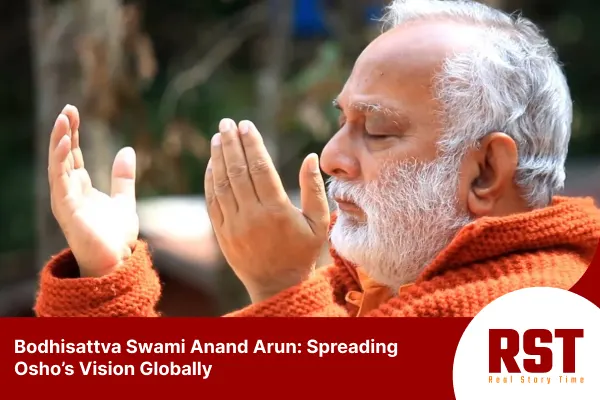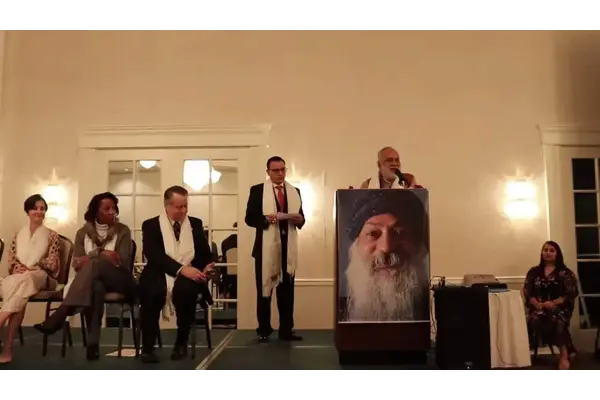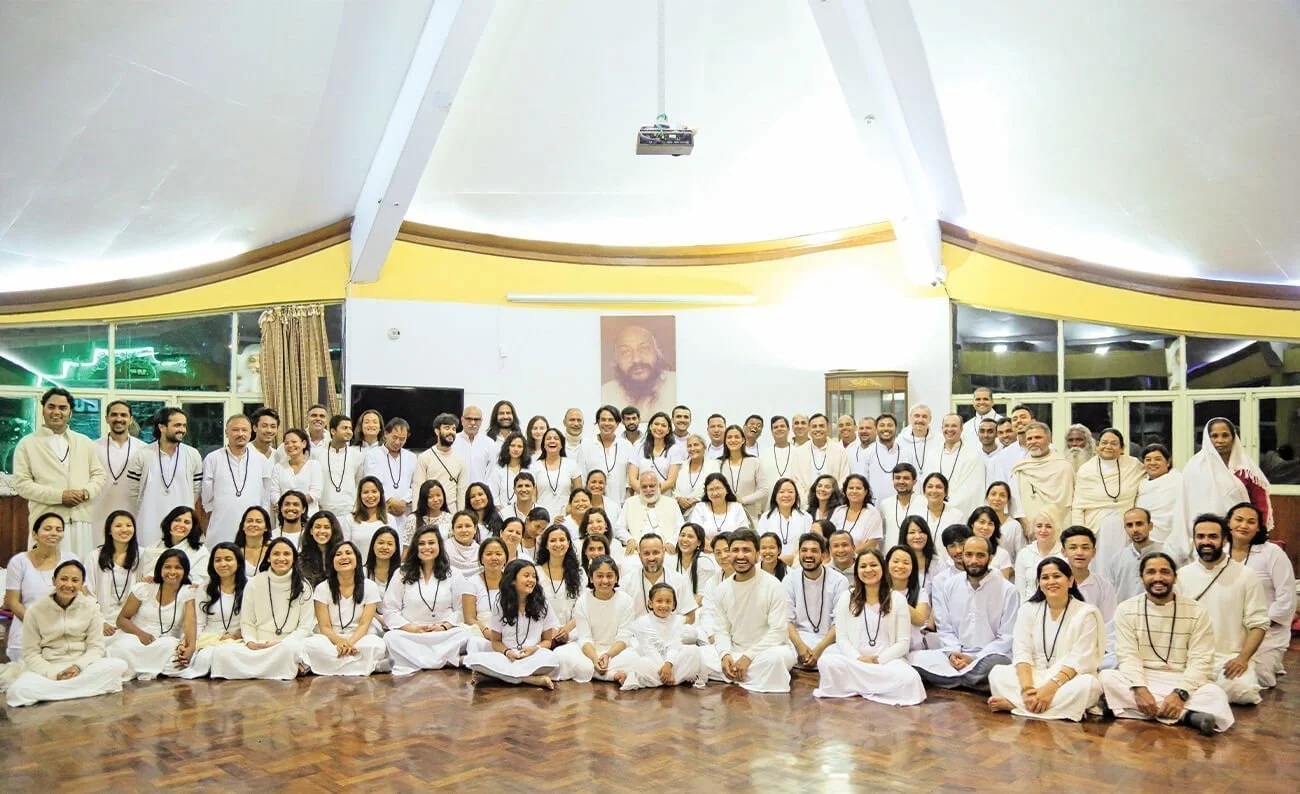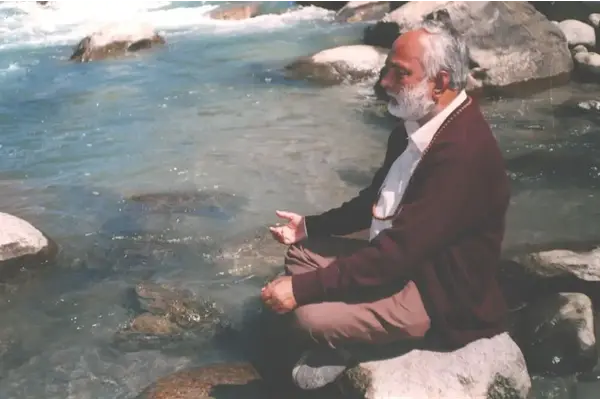Bodhisattva Swami Anand Arun: Spreading Osho’s Vision Globally
By Kushal Shrestha - Jun 27, 2025 | Updated: June 27, 2025 | 9 min read

Sometimes, a spiritual journey begins with a book. Or a strange conversation. But for Swami Anand Arun, it began with a moment that was quiet, unannounced, and life-altering. He was just a young engineering student when he first encountered Osho’s words. And that was the turning point. Not a lightning strike, no. It’s more like a slow burn that never really went out.
Decades later, he has never just been an Osho follower; he is one of the most influential voices carrying forth that vision quietly and steadily across borders and generations. His story isn’t loud. It doesn’t need to be. The story unfolds like a meditation itself, layered, still, yet somehow alive.
Early Life: A Seeker in the Making
Swami Anand Arun, also known as Arun Kumar Singh, was born on June 16, 1946, in Janakpur, Nepal, a city steeped in spiritual lore yet grounded in simplicity. As a young boy, he was drawn to peaceful places, time for reflection, and the silent beckoning of a higher set of questions. For him, life would magnificently hum with something just beyond the visible.
He followed a conventional path outwardly, studying engineering in Patna, India. But inwardly, another current moved through him: a soft yearning, a hunger that technical knowledge could never satisfy.
Then came the turning point.
It was March 29, 1969. He was young and had yet to complete his studies. On that very day, his life changed forever as he met Osho for the first time. The meeting, silent yet thunderous, felt as if it were the closing chapter of a long and invisible search. “This is it,” he would later say. “I had found my master.” Not through logic, but because there was recognition. Something ancient stirred, and with that single glance, the inward journey had begun.
Some years later, in 1974, he was formally initiated into sannyas before Osho in Pune. Arun Kumar Singh, the aspiring engineer, was now renamed Swami Anand Arun, a disciple devoted not just to name but to being.
After a few precious months at the ashram, surrounded by the energy and silence that living masters radiate, Osho gave him a quiet instruction: Return to Nepal. Open a meditation center so that others can receive this light.
It wasn’t a request. It was a blessing wrapped in responsibility. And with that, the foundation of his lifelong path was set not to follow but to share.
Preserving Osho: Ashes, Discourses, Global Recognition
Some responsibilities arrive as whispers from within, quiet but undeniable. For Swami Anand Arun, one of those came in the years following Osho’s physical departure.
In 1990, blessed with deep reverence and a deep sense of spiritual responsibility, Swami Arun brought a portion of Osho’s ashes into Nepal. The ashes were enshrined in the very heart of Osho Tapoban, not as a memorial but as a living force for seekers to feel and respect.
This act itself was controversial, especially among a few traditional followers who resided in Pune. Nevertheless, for most, Osho Tapoban remains a sacred space where they feel Osho’s presence.
Beyond the ashes, he kept Osho’s legacy alive through discourses, retreats, and teachings across continents. His talks possess a profound level of understanding founded on the clarity of everyday experience and convey Osho’s complex vision into teachable moments for contemporary seekers.

He was the central figure behind the declaration of December 21 as the United Nations’ World Day of Meditation. With the Nepali government’s endorsement and the support of advocacy over time, it went beyond recognizing one person to recognizing the potential of inner silence.
In his writings, lectures, and meditative communities, Swami Anand Arun continues to hold Osho’s light not rigidly, not as an heir but as a living current. A transmission is still unfolding.
From Ashram Hands-On to International Teacher
Back in Nepal, young Swami Anand Arun didn’t arrive with grand plans or sweeping declarations. He came back with a simple instruction and a heart full of devotion. There were no resources, no team, and no ready-made infrastructure, just a vision and a deep inner trust that somehow it would all unfold.
The early days weren’t easy. The meditation center he established was modest, with more spirit than structure. Often, he did everything himself, from arranging cushions for dynamic meditation to washing floors after a long day. He taught with his hands as much as with his words.
If something needed to be built, he picked up a tool. If someone needed to be heard, he listened. It wasn’t glamorous, but it was real.
And perhaps that’s what made it powerful.
Over the years, that tiny center began to blossom. More seekers arrived. The energy deepened. And what started as a small commune in Kathmandu eventually gave birth to Osho Tapoban in the lush, peaceful foothills of the Nagarjun forest.
But Tapoban was never meant to be the end. It was a beginning.

Over the years, the voice of Swami Anand Arun would quietly echo beyond borders. He gave meditation camps in various countries across Europe, North America, Russia, Japan, and Southeast Asia.
Without any heavy marketing and any forceful promotion, people came out of their own accord, perhaps attracted not just by the teachings of Osho but by the grounded humility of someone who had lived them.
His presence carried something both ordinary and extraordinary. In a world full of noise, he offered silence. In a time obsessed with answers, he invited questions.
And so, the student became the teacher. But it was never the conventional way; authority was never claimed. He offered companionship. He did not preach but pointed. He did not lead crowds. He created space for individuals to find their inner master.
READ MORE: The Empire Builder: Devi Prakash Bhattachan’s Game-Changing Business Legacy
Mission and Message: Happiness Without Cost
The message of Swami Anand Arun, much like his presence, is tranquil yet unyielding. It does not rest on high theories or complex philosophies. The fundamental ideology is shockingly simple: true happiness is a right given to every human being, and it can never be achieved at the cost of others.
That thought alone pauses you, doesn’t it?
In a world where happiness often comes tagged with competition, comparison, and control, his words offer a different kind of invitation. One is rooted not in external victories but in inner balance, not in taking more but in being still enough to feel what’s already there.
Time and again, he returns to one theme: meditation is the key. Not as an escape, not as a technique to master, but as a way of remembering who we are beneath the noise, beneath the striving.

He speaks gently, often with a trace of caution, about modern anxieties, mental health struggles, and the desperation he sees in so many young people trying to keep up in a restless world. His solution isn’t revolutionary. It’s timeless. Sit. Breathe. Watch. Go inward, even just a little, every day.
And through that stillness, he believes, we naturally become less violent, less anxious, and more present, not just for ourselves but for the people around us. Peace begins within, he often says. And only then can it ripple outward.
His initiatives echo this belief. From meditation in schools to hosting nature retreats, tree-planting movements, and discussions with political and global leaders, all these initiatives share a common philosophy: inner transformation as a pathway to collective healing.
It’s not about abandoning life. It’s about entering it more fully with open eyes, a quiet mind, and a heart that no longer needs to be conquered to feel alive.
Awards and Achievements of Swami Anand Arun
Rarely had he ever sought fame, and yet he had always enjoyed the respect of spiritual and national circles.
He was honored with Nepal’s Prabal Janasewa Shree Award, one of the nation’s highest civilian awards, for his promotion of meditation, empowerment of youth, and mental well-being. He is also considered among Nepal’s 100 Most Influential People and recognized as one of the Top 50 Visionaries.
Beyond public honors, his influence has extended through his written works. Swami Anand Arun has authored several acclaimed books, including Mystics and Miracles, Lone Seeker, Many Masters, In Wonder with Osho, Satsang, and Panchseel: Five Sutras of Transformation.
His Hindi title, Santo Ke Sangh, and Nepali bestsellers, including Achamma Jo Maile Dekhen, Santa Darshan, Santa Gatha, and Antar Yatra, have touched thousands.
Most have become national bestsellers; many English titles have been translated into Russian and Japanese, quietly and deeply spreading his message around the globe.
But his titles are merely representations; his actual achievements are felt much more profoundly in the silence of his retreats, his communities, and the lives of those he has touched.
Swami Anand Arun: Carrying Osho’s Flame with Silence and Grace
There is no dazzling spiritual story to be told about Swami Anand Arun’s life. Instead of roaring, it gently breathes.
He has traveled from being a curious engineering student to becoming one of the first disciples of Osho, from humble origins in Nepal to guiding thousands quietly across the globe. His path has unfolded steadily and with complete faith: steady, devoted, often unnoticed, yet always able to make an impact.
He will neither proclaim himself a guru nor offer salvation. What he does offer is an intermediate state of being and a way inward. Awakening, his teachings say, does not require turning one’s back on the world; all it requires is coming back to oneself. Happiness is free; all it requires is awareness.
And this is the deepest meaning of his legacy: reminding us that change is not somewhere out there. It is here. In silence. In breath. In that unimaginably small and sacred act of just sitting, watching, being, and remembering who we truly are.
Swami Anand Arun Quick Facts
| Attribute | Details |
| Birth Name | Arun Kumar Singh |
| Spiritual Name | Swami Anand Arun |
| Born | June 16, 1946, Janakpur, Nepal |
| First Met Osho | March 29, 1969 (as an engineering student in Patna) |
| Took Sannyas | 1974, Pune, India |
| Role | Osho’s Early Disciple, Spiritual Teacher, Meditation Guide |
| Founded | Osho Tapoban (Nepal) + 100+ centers worldwide |
| Focus Areas | Meditation, Youth Mental Health, Inner Transformation |
| Books (English) | Mystics and Miracles, Lone Seeker, Many Masters, In Wonder with Osho, Satsang, Panchseel: Five Sutras of Transformation |
| Books (Hindi/Nepali) | Santo Ke Sangh (Hindi), Achamma Jo Maile Dekhen, Santa Darshan, Santa Gatha, Antar Yatra (Nepali) |
| Major Awards | Prabal Janasewa Shree Award (Nepal) |
| Recognitions | Top 100 Influential People in Nepal, Top 50 Visionaries |
| Global Recognition | Key figure in advocating for the UN’s World Meditation Day (Dec 21) |
Notice an error?
Help us improve by submitting a correction.







